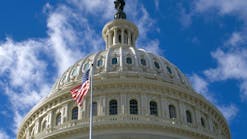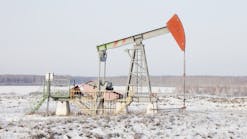EPA proposes tighter ground-level ozone pollution controls
The US Environmental Protection Agency proposed reducing ground-level emissions limits to 65-70 ppb from their current level of 75 ppb. It also will take comments on possibly cutting limits to 60 ppb.
EPA issued its proposals as part of a federal Clean Air Act requirement for it to review National Ambient Air Quality Standards (NAAQS) every 5 years. It established the 75 ppb limit in 2008.
The agency will accept comments on the proposals for 90 days following their publication in the Federal Register. It also plans to hold three public hearings. Its goal is to issue final ozone standards by Oct. 1, 2015.
“Bringing ozone pollution standards in line with the latest science will clean up our air, improve access to crucial air quality information, and protect those most at risk,” EPA Administrator Gina McCarthy said as the proposals were release on Nov. 26.
“It empowers the American people with updated air quality information to protect our loved ones—because whether we work or play outdoors—we deserve to know the air we breathe is safe,” McCarthy said.
Air quality improving
Oil and gas industry leaders and other business trade association executives questioned the need for tighter controls while states were still implementing measures to reach 75 ppb levels.
“Air quality has improved dramatically over the past decades and will continue to improve as EPA and states implement existing standards, which are the most stringent ever,” American Petroleum Institute Pres. Jack N. Gerard said.
“Careful review of the science shows that the current standards already protect public health,” Gerard said. Tightening these standards could be the most expensive regulation ever imposed on the American public, with potentially enormous costs to the economy, jobs, and consumers.”
American Fuel & Petrochemical Manufacturers Pres. Charles T. Drevna, meanwhile, warned, “This regulation promises to be the most expensive in US history, while providing little benefit to the environment and consumers.”
Drevna said studies have shown that, if enacted, the standard could lead to millions of jobs lost and could cost US business hundreds of billions of dollars every year, “yet this administration doesn’t seem to care.”
In its announcement, EPA said reducing the limit to a range of 65-70 ppb would protect both children and adults by preventing more than 750-4,300 premature deaths, 1,400-4,300 asthma-related emergency room visits, and 65,000-180,000 missed workdays.
Benefits of meeting the proposed standards would outweigh the costs as every dollar invested would return up to $3 in health savings, it asserted. It estimated annual costs would be $3.9 billion in 2025 for a 70 ppb standard, and $15 billion for a 65 ppb standard.
Tier-3 and other rules
EPA said a combination of recently finalized or proposed air pollution rules—including Tier-3 clean vehicle and fuels standards—would help states meet the proposed standards by significantly cutting smog-forming emissions from industry and transportation.
It said its analysis of federal programs that reduce air pollution from fuels, vehicles and engines of all sizes, power plants, and other industries shows that the vast majority of US counties with monitors would meet the more protective standards by 2025 with rules and programs now in place or under way.
“Local communities, states, and the federal government have made substantial progress in reducing ground-level ozone,” EPA said. “Nationally, from 1980 to 2013, average ozone levels have fallen 33%. EPA projects that this progress will continue.”
National Association of Manufacturers Pres. Jay Timmons called EPA’s ground-level ozone reduction proposals ill-timed. “This new standard comes at the same time dozens of other EPA regulations are being imposed that collectively place increased costs, burdens, and delays on manufacturers, threaten our international competitiveness, and make it nearly impossible to grow jobs,” he said.
“Manufacturing growth could slow or stop in states that find themselves unable to meet a lower ozone standard,” the American Chemistry Council said. “In these ‘nonattainment’ areas, facilities face regulatory requirements that make projects far more costly and complex. Most likely, companies wanting to expand or build a facility will be forced to shut down operations elsewhere or find the significant additional investment required to buy emission offsets.”
Drevna said EPA’s proposals also are “nearly comical” given the Obama administration’s extensive public focus on reducing greenhouse gas emissions. “Any process to achieve such stringent ozone requirements will require more energy and increase [GHG] emissions, in direct conflict with other EPA regulations,” he said.
Contact Nick Snow at [email protected].

Nick Snow
NICK SNOW covered oil and gas in Washington for more than 30 years. He worked in several capacities for The Oil Daily and was founding editor of Petroleum Finance Week before joining OGJ as its Washington correspondent in September 2005 and becoming its full-time Washington editor in October 2007. He retired from OGJ in January 2020.


